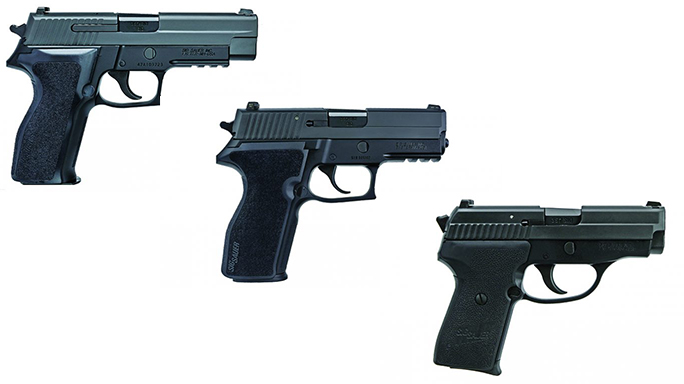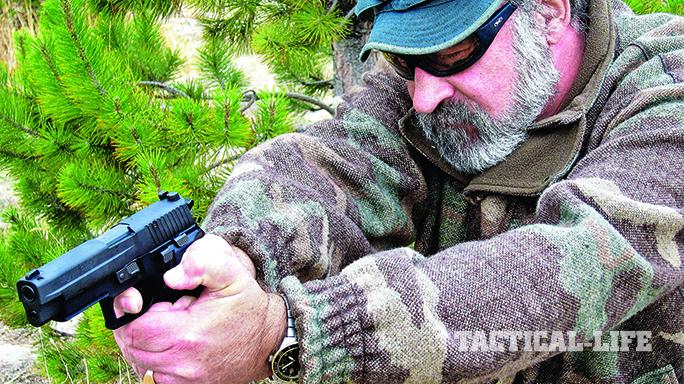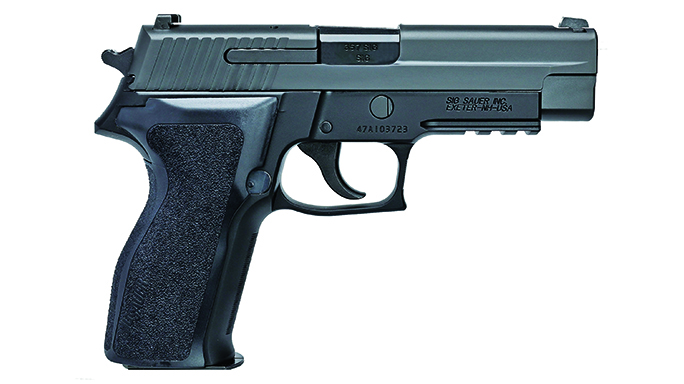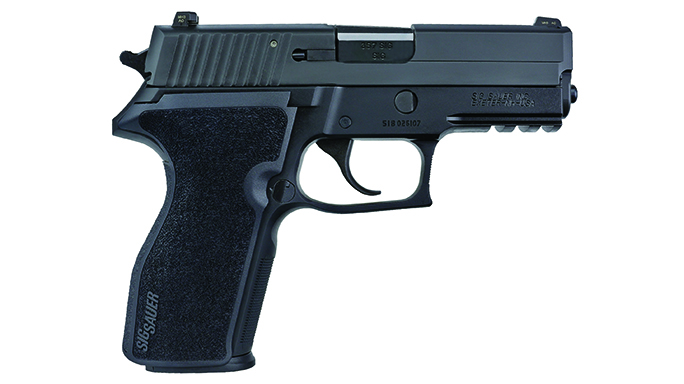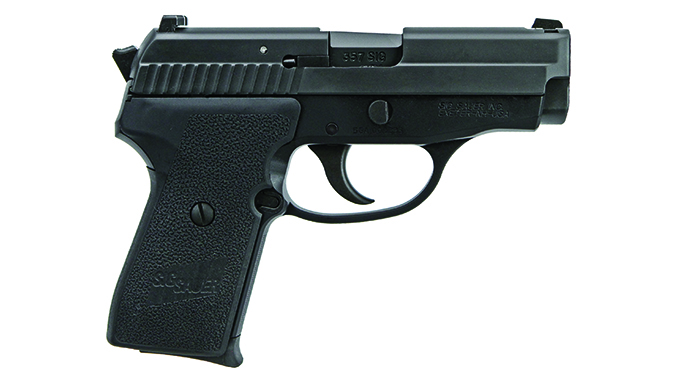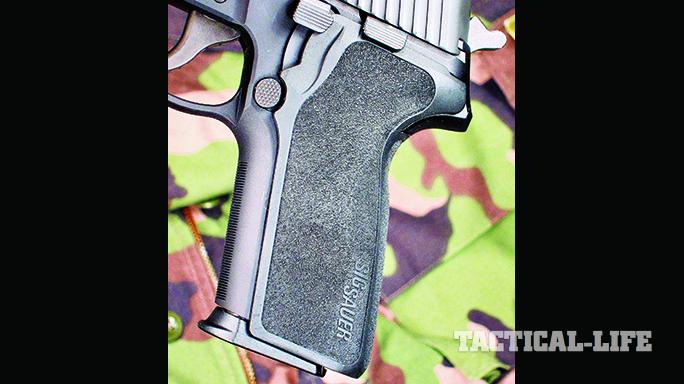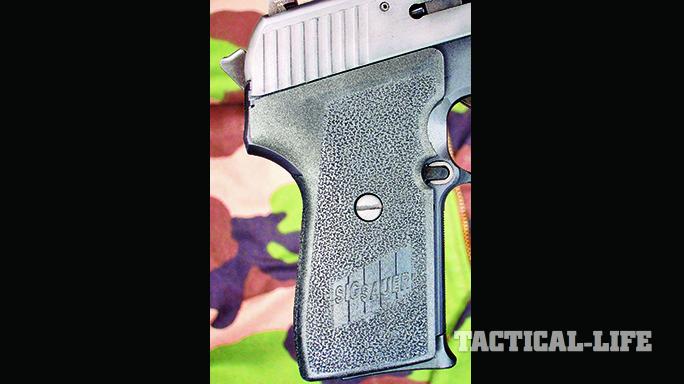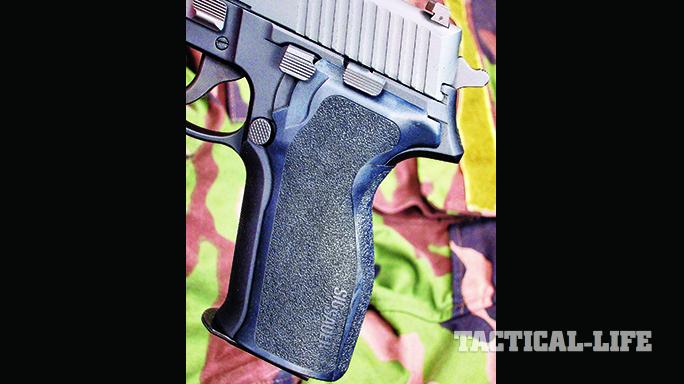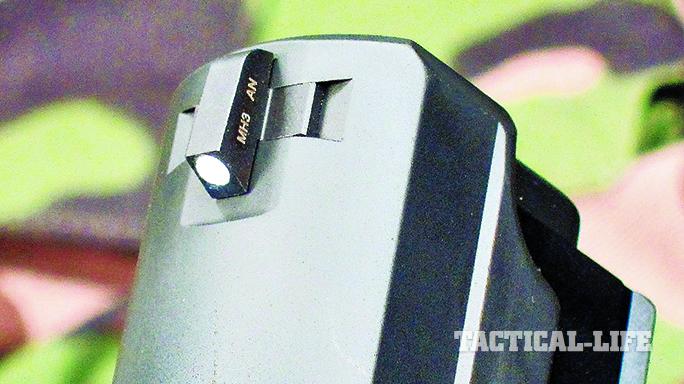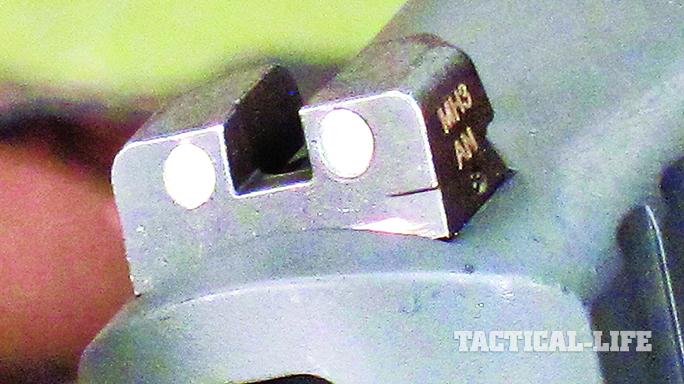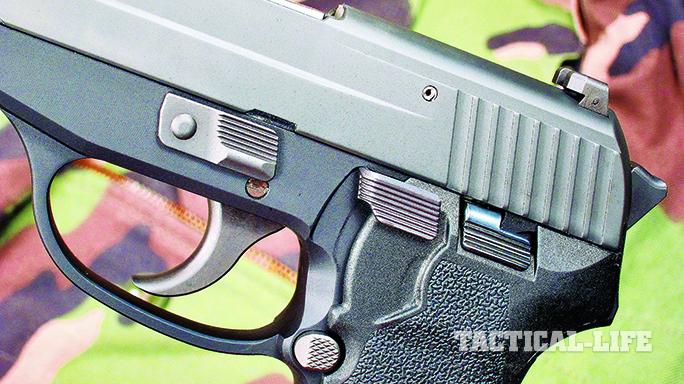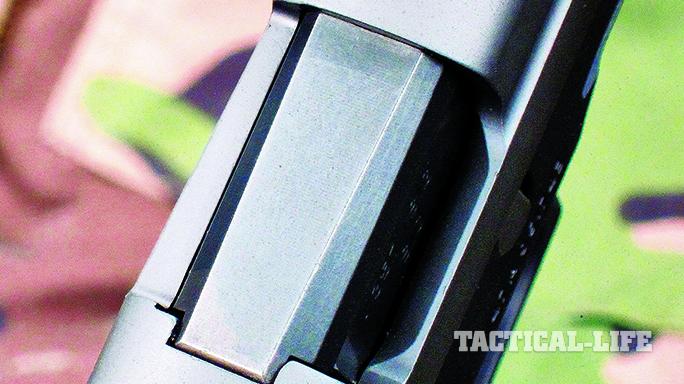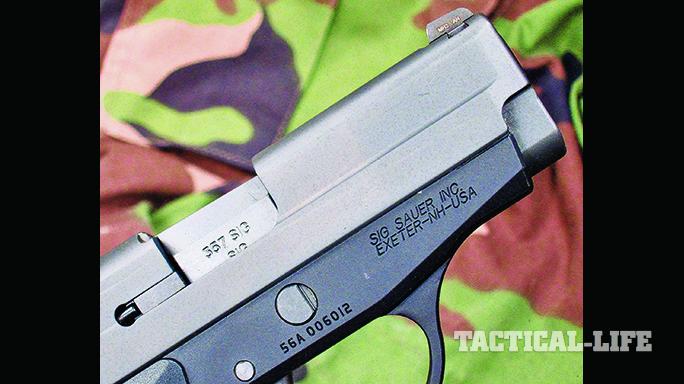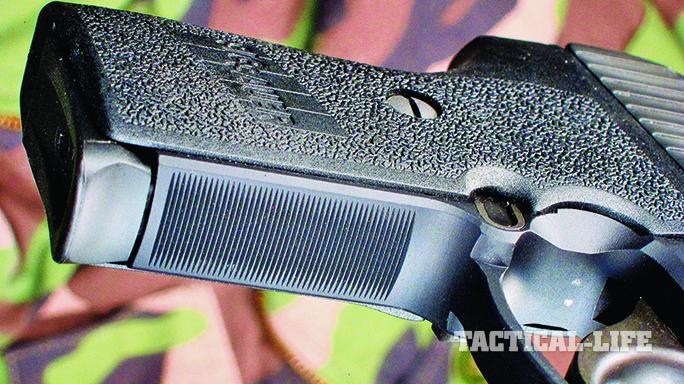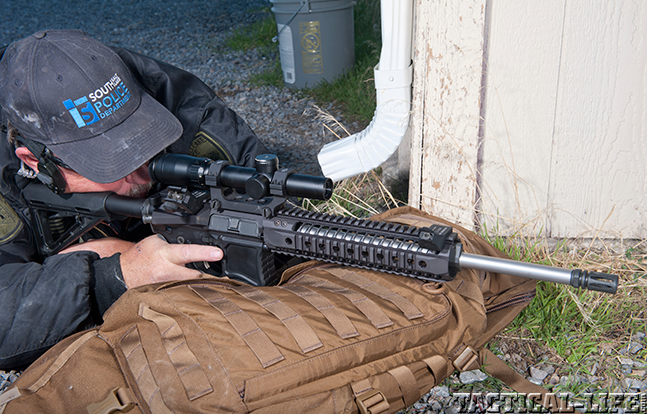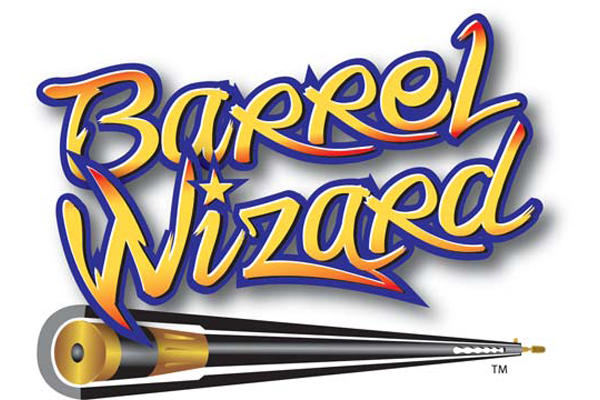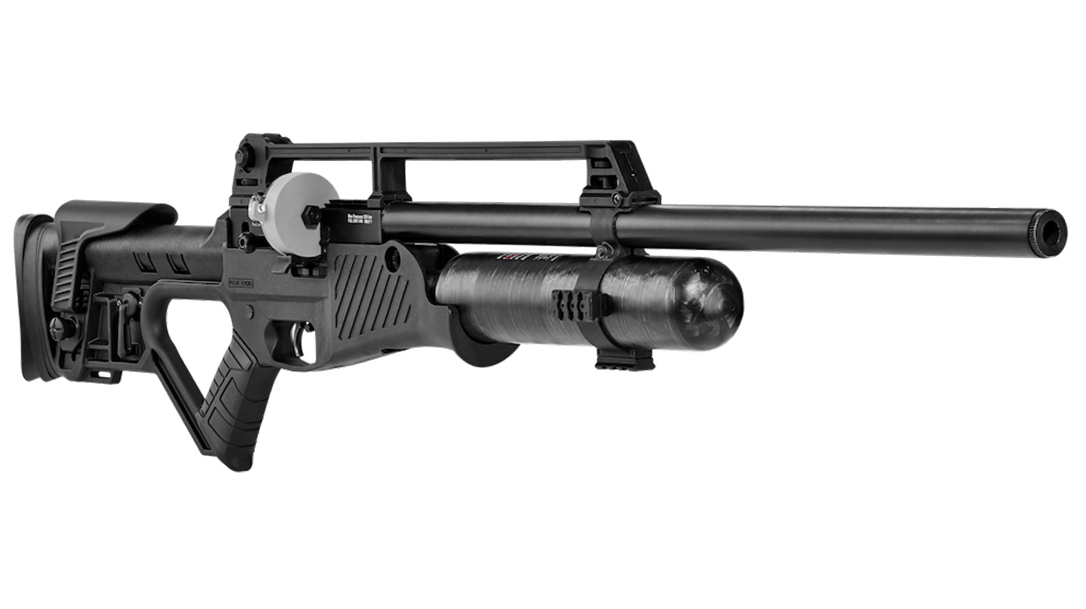Back in 1935, when Smith & Wesson first unveiled the .357 Magnum caliber in the beefy N-Frame, it was immediately recognized as the “next big thing.” The round was widely touted as the answer to bringing down speeding cars for law enforcement officers and charging grizzlies for hunters, and the first .357 Magnum S&Ws were set apart from the mundane by the factory instituting a “Registered Magnum” program, complete with a certificate the lucky owner could display with pride.
Part of a joint effort by S&W and Winchester’s ammunition division, the .357 Magnum initially pushed a 158-grain bullet at 1,515 fps, which was quite impressive at the time. The caliber immediately caught on, even during Depression-era economics when new gun money wasn’t easy to come by, and in the hands of numerous field and LE users, it became a very popular revolver cartridge. Loadings were modified, adapted, tweaked, toned down, toned up and generally expanded to cover a good range of applications in the various revolver models and sizes produced by such firms as S&W, Colt, Ruger, Taurus and Dan Wesson.
For police and personal-defense uses, the accelerated development of the caliber through the 1980s and onward showed a demonstrable trend toward the 125-grain JHP as being a very effective fight-stopper, providing a middle-of-the-road approach in less overpenetration against human aggressors than the heavier 158-grain JHPs without the under-penetration of the lighter 110-grainers. The 125-grain JHP soon became the yardstick to measure against for such purposes. And then, along came Sig Sauer.
Sig Sauer in Switzerland teamed up with our own Federal Premium here in the U.S. to produce the .357 SIG in 1994, which was intended to duplicate the 125-grain .357 Magnum JHP revolver round, but by using a necked-down 10mm case behind a 0.355-inch-diameter bullet. Technically, that bullet diameter was closer in genetics to a conventional 0.355-inch 9mm bullet than a 0.358-inch .357 Magnum projectile, but the nomenclature enforcers never raised a fuss over it, and the result was a new round that came close enough to the ballistic level of a 125-grain .357 Magnum to make no practical difference, in a relatively light and packable autopistol.
- RELATED STORY: 3 DHS Agencies That Rely on the Sig Sauer P229
Since the .357 SIG was also close enough in both pressures and dimensions to the .40 S&W to fit and function safely in most existing .40 S&W pistols, that meant the hot new round didn’t need a hot new pistol to shoot it, it could be adapted to designs already on the market. Makers with established .40 S&W pistols could modify their lineups to accommodate the .357 SIG, and in most cases the same magazines and slides could be used interchangeably, with just a barrel swap between the two, or in some models a different recoil spring. Sig Sauer’s double-action/single-action (DA/SA) P229 was the first production pistol in .357 SIG.
The .357 SIG was released to a fair amount of interest and expanded through other pistol brands, but it never achieved anywhere near the acceptance of the .40 S&W. This has been attributed to several factors, such as recoil and cost, but the root cause isn’t important. It’s unfortunate that the caliber didn’t catch on better than it did, because it’s an excellent performer as a fast and flat shooter, and its bottleneck configuration also makes it run well in pistols. Today, it seems to be in decline, but Sig Sauer still produces several pistols in .357 SIG, as you can see on the company’s website. (If you traipse through it, take a lunch along—you’ll be there for a while.)
In the meantime, we’re here to look at three of Sig’s basic pistols, in three different sizes, to cover everything from duty to concealed carry. Yes, you can go fancier and more feature-heavy, but these are foundational and representative, so on with the show.
P226 Nitron .357 SIG
The basic, full-sized P226 Nitron is a double-stack duty pistol that follows the overall concept of the older flagship P220, but in smaller calibers. In .357 SIG form, it features a 12-round, steel magazine with a steel baseplate; a 4.4-inch barrel; a DA/SA trigger; SIGLITE night sights; a Picatinny accessory rail; a hooked triggerguard, a black hardcoat anodized aluminum alloy frame; a Nitron-finished stainless steel slide; horizontal serrations on the frontstrap; and a synthetic, textured, one-piece grip. As with all three of the pistols we’ll look at here, taking down the P226 Nitron is very quick. After you make sure the gun is clear, you pivot the left-side disassembly lever 90 degrees, then slide the top assembly forward and off of the receiver.
The other controls are the same as other DA/SA Sigs, with a decocker lever to safely lower a cocked hammer, a slide release and a left-side checkered magazine release button. The trigger is smooth-faced, the short hammer spur is serrated, the external extractor is long and beefy, and the guide rod for the double-wound recoil spring is steel.
P229 Nitron .357 SIG
The P229 was the first model made at Sig’s U.S. plant in Exeter, New Hampshire, and it’s one of the company’s most popular models as a mid-sized pistol that works well for open and concealed carry. In .357 SIG, it carries 12 rounds in its steel, double-stack magazines—twice what a traditional six-shot .357 Magnum totes. The barrel’s shorter, at 3.9 inches, and in basic Nitron form it uses the same controls, including a smooth-faced, DA/SA trigger; a short, serrated hammer spur; SIGLITE night sights; a Picatinny rail; a hooked triggerguard, a black aluminum alloy receiver; a Nitron-finished steel slide; a double-wound wire recoil spring on a steel guide rod; and the same disassembly process.
The grip contour is different from the bigger P226, with a straight backstrap line, but the P229 still uses a highly textured, one-piece synthetic grip and serrated frontstrap panel, and the ergonomics are quite well designed.
P239 Nitron .357 SIG
Dropping down in size and capacity, the P239 is obviously built to be a prime contender for a concealed carry or backup role. With a single-stack, seven-round, steel magazine in .357 SIG, it’s much trimmer in dimensions and correspondingly lighter than the previous two models. The 3.6-inch barrel does reduce velocities somewhat, but the difference isn’t all that big, and the smaller pistol still produces faster .357 SIG speeds than most standard 9mm loads in comparable bullet weights through a longer 4-inch barrel.
The DA/SA P239’s controls are identical to the P226 and P229 in location and function, with very slight contour differences in the decocker lever, slide release and magazine release. The sights are the same; the external extractor is still effective but much shorter; internally, the guide rod’s still steel; and the recoil spring here is a flat, single-strand version. There’s no accessory rail on this one, and the compact pistol features a long and gracefully up-swept guard around its smooth-faced trigger, with the same serrated frontstrap, a stubby serrated hammer spur, and a two-piece synthetic grip.
Range Time
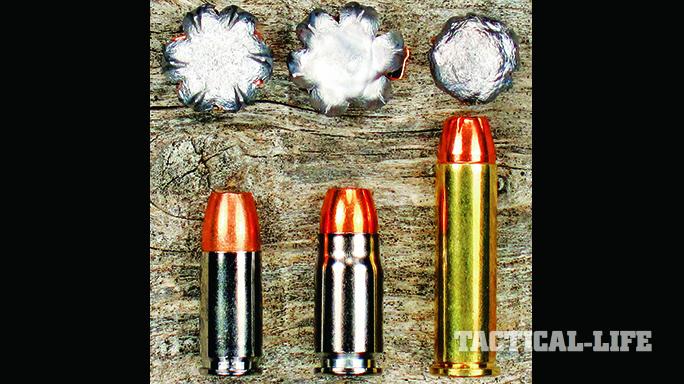
As mentioned, the .357 SIG was developed as a 125-grain JHP to duplicate the ballistics and terminal performance of the famed 125-grain .357 Magnum load, which is commonly listed nowadays at 1,450 fps as a rough loading standard. There are lighter .357 SIG bullet weights and there are heavier bullet weights, but to keep largely to an apples-to-apples comparison, I took five 125-grain loads and one 135-grainer to the old quarry for testing. I also tested the velocities alongside a 124-grain 9mm Sig V-Crown JHP (1,173 fps through a G17) and a 125-grain .357 Magnum Black Hills JHP (1,451 fps through a Ruger GP100).
These were all factory loads, and I fired all of the five-shot groups off my old faithful Outers Pistol Perch at 25 yards. With identical sights on all three pistols, and firing in SA model, it was easy to compare the accuracy of the three Sigs. The P226, as the biggest of the bunch, had weight and full-sized grip ergonomics on its side, and a good trigger with very slight creep before breaking at 4.75 pounds. It had more muzzle flip than I expected, but the pistol was very controllable under recoil, and the grip texture anchored well in my hand without being abrasive at all.
- RELATED STORY: Superior Sigs – 5 High-End Sig Sauer Rifles for Hunters, Target Shooters & Collectors
The middle-ground P229 didn’t produce the increased muzzle rise I anticipated from having less mass out front; it turned out to be quite mild in terms of recoil. The trigger had the same very short creep before breaking at 4.5 pounds, and the grip contours didn’t feel quite as natural in my hand as the P226, but still very solid.
As the “runt” of the litter, the P239 did generate the muzzle rise that I was waiting for, but even with its much thinner, shorter and less aggressively textured grip area, it was easy to control, and I didn’t have to reestablish my grip between shots. The grip offered plenty of room for a full three-finger hold. The trigger on the P239 had more creep than the larger pistols before breaking at 4.75 pounds, but it was still very consistent.
Overall, the P229 was the tightest shooter off the rest on average, with none of its best five-shot groups going over 4 inches. The little P239 beat out its two big brothers in bringing in the single best group of the accuracy session at just under 2 inches, and while none of the three would take home a first-place trophy at a formal target match, the best groups ran from 2.5 to 3.5 inches, which is perfectly adequate for service pistol or concealed-carry applications. And I didn’t experience a single malfunction in any of the Sig pistols.
Reading Speeds
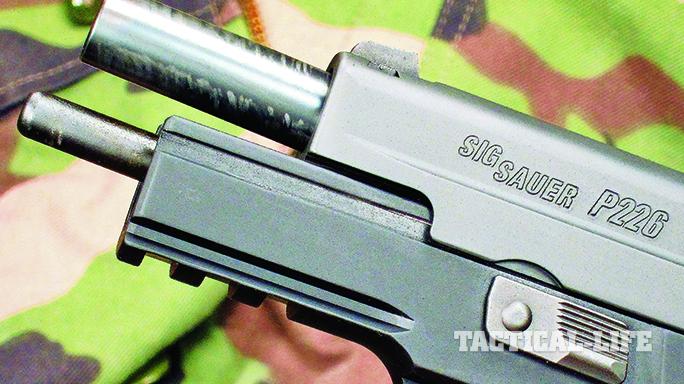
None of the Sigs quite managed to reach the 1,450-fps velocity of the generic 125-grain .357 Magnum JHP, but the P226 came close with two rounds at 1,400 fps. Not surprisingly, those chronographed velocities declined progressively in the shorter P229 and P239 barrels when it was their turn, but the shorter pistols still shot faster with all of the 125-grain .357 SIG projectiles than typical 9mm speeds, even the P239. The exception in the caliber was the one Hornady 135-grain .357 SIG load, and that slightly heavier bullet ran markedly slower.
I also shot those two 9mm and .357 Magnum loads as well as Sig Sauer’s 125-grain .357 SIG V-Crown JHP ammo through a line of 1-gallon water jugs to test for penetration. So how did they stack up? Lining up those jugs in a row, the 9mm JHP shredded the first jug, perforated the second and came to rest in a perfect mushroom shape in the third. The.357 SIG JHP blew the first jug wide open, tore through the second and stopped in the third, again perfectly mushroomed. The Black Hills .357 Magnum JHP produced a small entry hole in the first jug, blew open the side while traveling through it and also ended up perfectly expanded, but inside of the second jug.
Both the 9mm and the .357 SIG traveled 11.5 inches through the first two jugs, plus however many inches into their third jugs. The .357 Magnum traveled at least 5.75 inches through the first jug, plus whatever distance into the second jug. At respective velocities of 1,173, 1,343 and 1,451 fps, you might conclude with this limited sampling that the 9mm was every bit as effective as the .357 SIG, with the .357 Magnum being less effective than either of the other two, and there’s no gain in going any hotter than the 9mm.
But context is important. The .357 SIG also shredded the second jug, indicating more probable “tissue” destruction and sustained energy transfer than either the 9mm or the .357 Magnum. The fact that the first jugs exploded violently for both the 9mm and .357 SIG rounds also suggests early expansion on entry, with subsequent travel done in a fully expanded state. Both are important in a defensive role. The .357 Magnum, with its clearly intact first-jug entry and exit holes, blew the cap off that jug while splitting out its side, but apparently didn’t aggressively expand on immediate contact. Its final at-rest configuration was a slightly smaller mushroom, despite the same bullet weight and higher velocity, but with all of the energy expended and less penetration.
- RELATED STORY: Sig Sauer P320 – The ‘Shape Shifting’ 9mm Pistol
With this admittedly non-scientific test methodology, it’s entirely possible that the .357 Magnum bullet traveled right up to the far wall of the second jug before stopping without exiting, giving it at least 10 to 11 inches of penetration. Again, in a defensive situation, this is perfectly acceptable; you want adequate penetration without through-and-through perforation, with a contained energy dump. And, of course, the major variable of bullet construction has to be emphasized, too. You’d see different penetration depths with other rounds in all three calibers with different bullet weights, construction and velocities.
The purpose of this limited comparison was just to show roughly where the .357 SIG falls in its niche between the 9mm and .357 Magnum. Don’t take the jug results with only these three loads to jump to any conclusions over which of these individual rounds is “best” for self-defense—that’s not the purpose of this demo. The takeaway is that the 125-grain .357 SIG JHP can come very close to .357 Magnum revolver velocities and energy, and may equal or exceed it in terminal performance depending on the individual load.
Taken as a whole, considering its high velocities, high magazine capacities and reliable feeding in quality pistols, my vote goes in favor of the .357 SIG. It may not be quite as mainstream as the ubiquitous 9mm, but it gives you a high-stepping mid-bore at “magnum” speeds with double the onboard carry capacity of a six-shooter while being faster to reload. I’d say that makes it far from dead.
The Sig Sauer brand has a very strong reputation going back to the 1980s, and I carried a P220 in 1982 when my agency became the second police department in my state to approve the brand for private purchases. And I’ve worked with several Sig pistols since then. Among other LE agencies, the Texas Rangers seem to like what the .357 SIG caliber does in their Sig Sauer pistols, and if it’s good enough for them—well, that’s endorsement enough.
For more information, visit sigsauer.com or call 603-610-3000.










